Below is the data rows I have:
ID Code OtherCol
7 Code1 NULL
7 code2 NULL
2 unk NULL
4 unk NULL
3 Code2 NULL
3 Code3 NULL
3 Code5 Other1
5 Code4 NULL
5 Code5 Other2
I am trying get this displayed as
ID name1 name2 name3 name4 name5 nameunk Othername
2 unk
3 code2 code3 code5 Other1
4 unk
5 code4 code5 Other2
7 code1 code2
I was able to pivot the first column but having a problem pivoting the second one.
And also there is a name for a given code, but the value under OtherCol are random.
